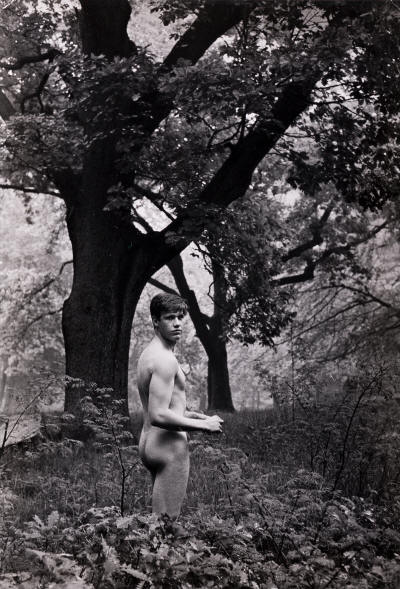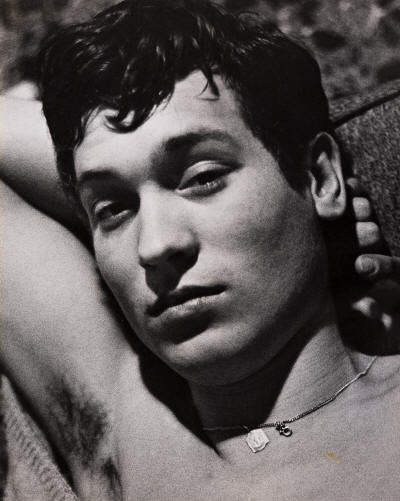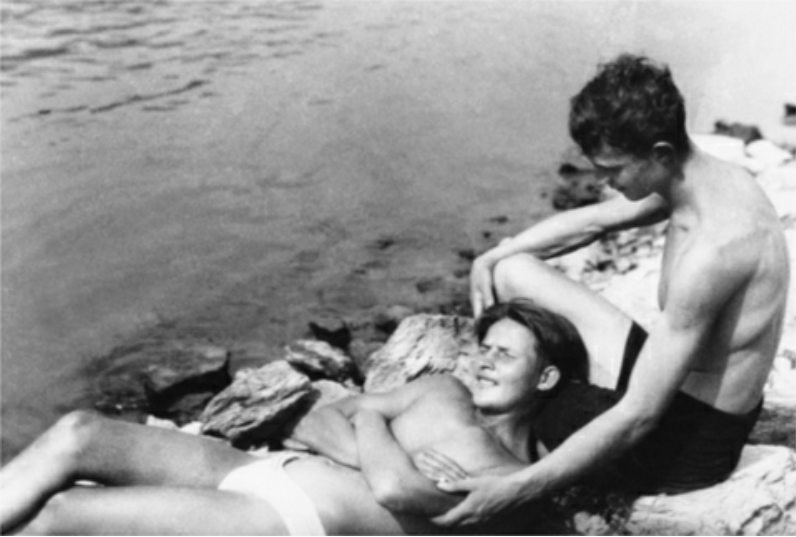

Queer Places:
List + Beisler, Pickhuben 6, 20457 Hamburg, Germany
Herbert List (7 October 1903 – 4 April 1975) was a German photographer, who worked for magazines, including Vogue, Harper's Bazaar, and Life, and was associated with Magnum Photos. His austere, classically posed black-and-white compositions, particularly of male nudes, taken in Italy and Greece have been highly formative for modern photography, with contemporary fashion photographers like Herb Ritts being clearly influenced by List's style. He is also noted for his erotic street photography.
Herbert List was born on 7 October 1903 to a prosperous business family in Hamburg, the son of Luise and Felix List.[1] He attended the Johanneum Gymnasium, and afterwards studied literature at the University of Heidelberg. While still a student he became apprenticed to his families coffee company.
From 1924 to 1928 List continued to work at the company and to travel to Brazil, Guatemala, Costa Rica and elsewhere.[2] During this time he began taking photographs.

HERBERT LIST (1903-1975)
Alexander in the Woods.
Silver print, the image measuring 168x117 mm; 6 5/8x4 5/8 inches, with List's Estate hand stamp, on verso. 1956; printed 1980s.

CECIL BEATON (1904-1980) & HERBERT LIST (1903-1975)
A trio of photographs of Andrea Tagliabue.
Silver prints, the images measuring 279.4x228.6 mm.; 11x9 inches and 241.3 mm.; 9 1/2 inches square, the Beatons with his signature, in ink, on recto and his hand stamp on verso; the List with his signature, title, date, and various notations, in ink, on verso. Circa 1960s.
Andrea Tagliabue met the bohemian artist and author Charles Henry Ford in the 1960s while Tagliabue was working as a film actor in Italy. The two quickly formed a bond and lived together in Paris and eventually New York. Through Ford, Tagliabue was introduced to the wider LGBQT+ community that existed in Lower Manhattan during the 60s and 70s.

Stephen Spender (right) and friend, embodying Freundschaft: photographed by
Herbert List, Germany, 1929
In 1930 he met photographer Andreas Feininger, who introduced him to the Rolleiflex camera. He began taking portraits of friends and shooting still lifes, influenced by the Bauhaus and surrealist movements. He used male models, draped fabric, and masks along with double-exposures.He has explained that his photos were "composed visions where [my] arrangements try to capture the magical essence inhabiting and animating the world of appearances."[3]
In 1936 List left Germany and took up photography as a profession, working in Paris and London. He met George Hoyningen-Huene who referred him to Harper's Bazaar magazine, but List was unsatisfied with fashion photography. He turned back to still life imagery, producing images in a style he called "fotografia metafisica", which pictured dream states and fantastic imagery, using mirrors and double-exposures.
From 1937 to 1939 List traveled in Greece and took photographs of ancient temples, ruins, sculptures, and the landscape, many of which were published in magazines and books. In 1941, during World War II, he was forced to return to Germany; but because one of his grandparents was Jewish[4] he was not allowed to publish or work professionally. In 1944 he was drafted into the German military, despite being of partly Jewish ancestry. He served in Norway as a map designer.[2] A trip to Paris allowed him to take portraits of Picasso, Jean Cocteau, Christian Bérard, Georges Braque, Jean Arp, Joan Miró, and others.
After the war, he photographed the ruins of Munich, and he became art editor of Heute magazine.
In 1951 List met Robert Capa, who invited him to join Magnum Photos. For the next decade he worked heavily in Italy. During this time he also started using a 35 mm film camera and a telephoto lens. He was influenced by his Magnum colleague Henri Cartier-Bresson as well as the Italian neorealism film movement. In the 1950s he also shot portraits of Marino Marini, Paul Bowles, W. H. Auden, and Marlene Dietrich in 1960.
In Stephen Spender's autobiographical novel The Temple, List is fictionalised as Joachim Lenz.
List gave up photography in the early 1960s to concentrate on his collection of Italian Old Master Drawings. On his death List's collection was absorbed in the Ratjen collection which was later acquired by the National Gallery in Washington.[5]
List died in Munich on 4 April 1975.[3]
My published books: